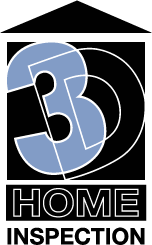A CHECKLIST FOR WINTERIZING INSIDE YOUR HOME
Winter is just around the corner. Winterizing inside your home is as important as winterizing outdoors. The cold may be outside. There’s a lot you can do to keep it there!
Winterizing Your Home: Indoors
General
- Check smoke and carbon monoxide alarms for proper operation. Replace batteries every six months or as needed.
- Seal the whole-house fan with an airtight cover and insulate it.
- Check all window and door hardware to make sure it’s working properly..
- Clean all exhaust fans and vents in bathrooms, kitchen and laundry room.
HVAC (Heating,Venting and Air Conditioning)
- Have a qualified, licensed HVAC technician inspect and service your furnace.
- Replace furnace filters frequently to allow the HVAC system to operate properly.
- Check your thermostat. Replace the batteries if they’re low. Remove dust from behind the cover.
- Don’t set the thermostat in your home below 55 degrees. Pipes may freeze if the inside temperature is lower than that.
- Check your humidifier system for proper operation. If condensation forms on bottom of windows, then the humidity level is too high.
- Vacuum fins on baseboards vent covers.
Plumbing
- Turn the water supply to outside faucets and waterlines off. The valve is usually found in the basement. Then drain the lines. Make sure to disconnect hoses on outside faucets. Protect waterlines from freezing.
- Insulate uncovered water pipes in areas exposed to cold temperatures. These areas include crawl spaces, attics and garages.
- Make sure your family knows where to find the main water supply valve for your home. Teach them how to turn it on and off. Should the water in your pipes freeze, quickly turning the water off reduces the chances that your pipes will burst.
Chimney, Fireplace and Wood Burning Stove
- Have a qualified professional service your chimney, fireplace or wood burning stove.
- Inspect the outside of the chimney for loose or damaged mortar, bricks, or stones. Also look for deteriorating joints.
- Make sure the spark screen is attached to the flue on top of the chimney. Check for obstructions or bird nests, which can prevent proper venting of exhaust gases or catch fire from sparks.
- Does the damper work properly? Do the grates need cleaning?
- Check for creosote build-up. An excessive build-up is a fire hazard.
Attic
The objective is to have the temperature in the attic approximately the same as the temperature outdoors.
- Inspect insulation. You need about 10 inches of insulation to reach an R-30 value. (You can learn more about R values at energy.gov.) This will reduce heat loss from the interior of the house into the attic. Heat loss can cause condensation, which can lead to damage, rot, mold, or ice damning.
- Inspect ventilation. There should be a clear passageway to the soffit vents. Roof vents need to be unobstructed. This will allow proper air flow, removing moisture and condensation build up.
- Inspect roof sheathing for water penetration, especially at vents and flues and where the roof meets the walls.
Garage and Shed
- Have snow removal equipment serviced to guarantee its proper operation when you need it.
- Run all gas-powered equipment until fuel is gone.
- Properly dispose of dirty, oily rags. Doing this removes flammable liquid storage from your garage.
Follow these tips for winterizing inside your home and you’ll have a safer, warmer winter. For tips on winterizing the outside of your home, read Part 1 of Mike’s winterizing tips.
These home maintenance tips are not intended to be all-inclusive, but rather general guidelines. All tips may not apply to every home. We recommend that inspections, repairs and maintenance beyond the abilities of the homeowner be performed by a qualified, licensed (if applicable) contractor or tradesman specializing in that item or system, and certified in the necessary safety procedures. Carefully follow manufacturer’s instructions.
